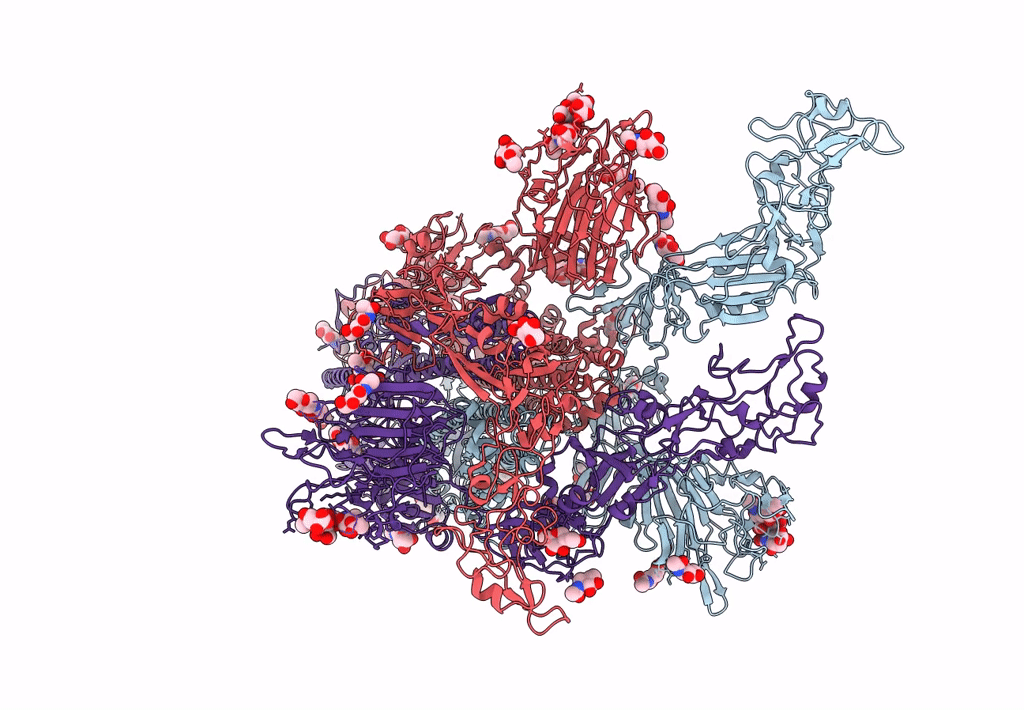
Deposition Date
2023-04-07
Release Date
2023-08-02
Last Version Date
2024-10-09
Entry Detail
PDB ID:
8OPN
Keywords:
Title:
Human Coronavirus HKU1 spike glycoprotein in complex with an alpha2,8-linked 9-O-acetylated disialoside (1-up state)
Biological Source:
Source Organism:
Human coronavirus HKU1 (Taxon ID: 290028)
Saccharomyces cerevisiae (Taxon ID: 4932)
Saccharomyces cerevisiae (Taxon ID: 4932)
Host Organism:
Method Details:
Experimental Method:
Resolution:
4.70 Å
Aggregation State:
PARTICLE
Reconstruction Method:
SINGLE PARTICLE


